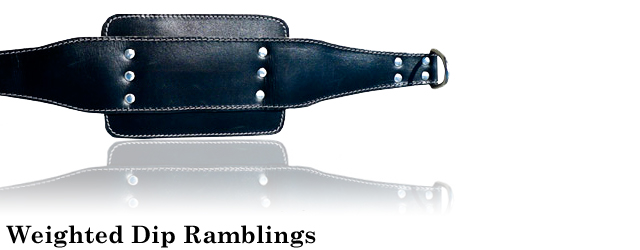
Weighted Dip Ramblings
I get asked and e-mailed about dips a lot, so here are some of my thoughts
As Rudyard Kipling warned (“lest we forget”) about the dangers of imperial hubris in his famous poem, "Recessional," the same caveat can be issued for the arrogant belief and dismissal of proven basic exercises. Weighted dips were a staple strength training movement before modern machines and gimmicks. They helped develop some of the strongest people of all time and most massive physiques of all time. Weighted dips have a place in a wide spectrum of programs that serve a wide range of goals.
Here are some reasons to include weighted dips in your training program:
- Weighted dips force you to handle your body weight, plus an additional load. In most sports, minimally, you will have to be proficient with your body weight.
- Weighted dips force the athlete to use his/her upper body and core to stabilize the load, unlike pushups, your feet are not on the ground.
- For muscle hypertrophy, do a Google search on weighted dips; many of the results will refer to this exercise as the “king” for the chest and the triceps. How many exercises claim this kind of monopoly on two different muscle groups?
- Dips build strength in functional activities and in strength tests. Pat Casey, the first man to bench press 600 pounds, had weighted dips at the core of his program. Want to bench big? Try dips! Not to mention, they help the overhead press. Dips helped me win the overhead press with ease at the Atlantis Strongest Man in America Contest.
- Athletes with shoulder or elbow injuries may find dips to be a good substitute for bench pressing.
- Dips have been the staple of many great physique athletes. I personally witnessed Branch Warren and Ronnie Coleman do dips on many occasions.
- Bar dips are a closed kinetic chain exercise, unlike the bench press.








